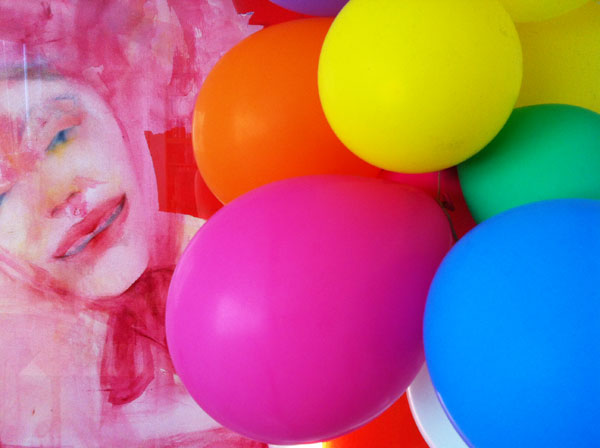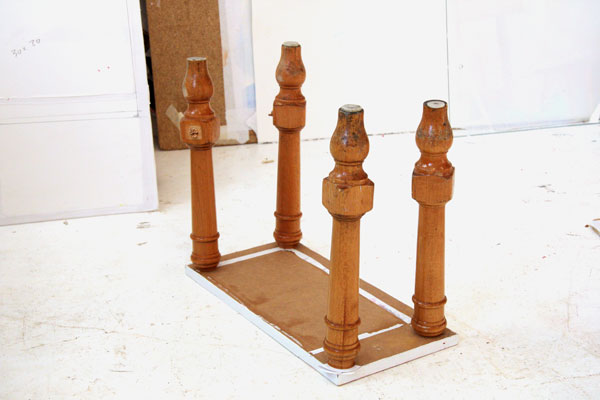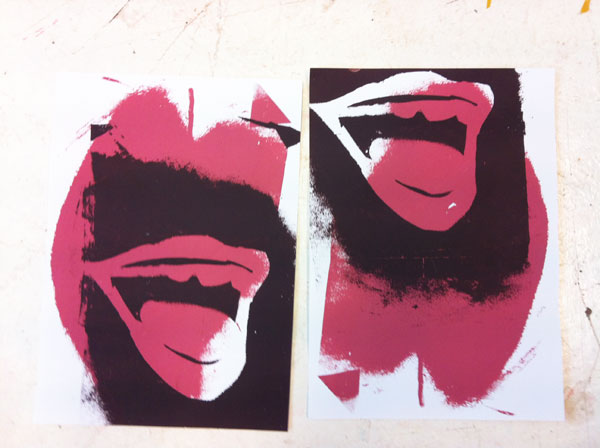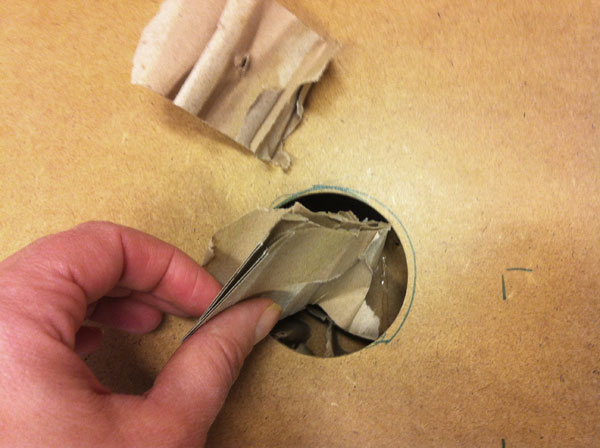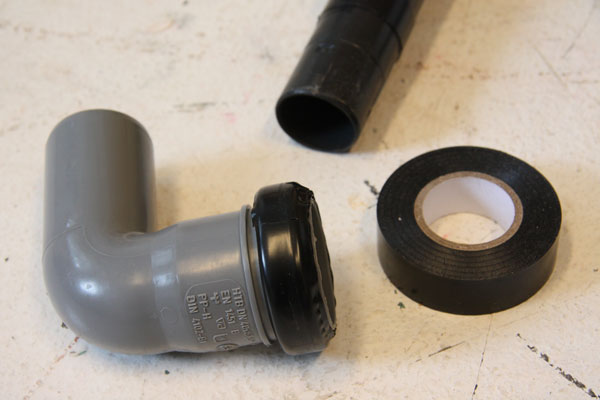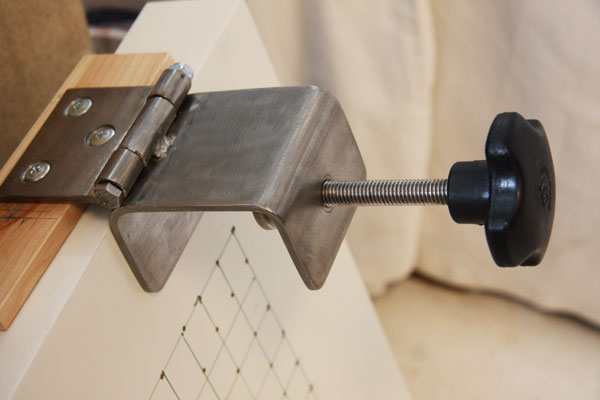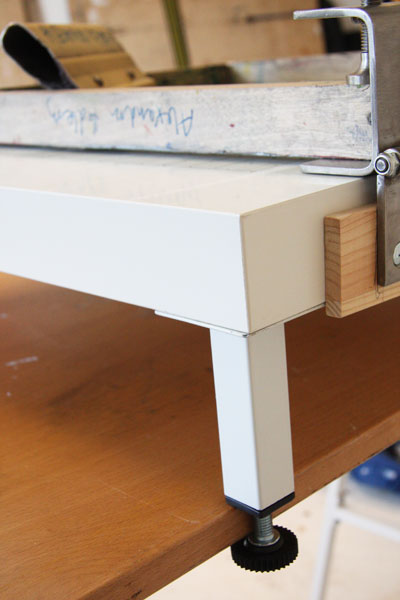 |
Friday, March 30, 2012
Thursday, March 29, 2012
process: landscape in glass
 |
| I'm continuing my glass tests. This is the landscape which I'm painting just in black and white as a contrast to the ice-cream. |
Labels:
glass,
spray paint,
studio,
work in progress
Wednesday, March 28, 2012
painting and balloons
Monday, March 26, 2012
Thursday, March 22, 2012
Wednesday, March 21, 2012
taking a carpentry course
Tuesday, March 20, 2012
a little preview; studio visit
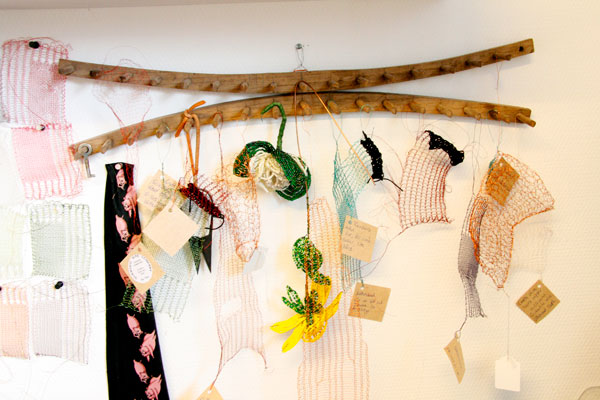 |
Labels:
studio visit,
Tina Frausin
Sunday, March 18, 2012
celebration; ice cream and whiskey!
 |
Wednesday, March 14, 2012
Pop-up shop
 |
 |
 |
On my way home today I stopped by "Studion" and their pop-up shop. A lot of things to see that I hadn't seen in real life before. Like the Rym products, Cecilia's patterns that she exhibited at the furniture fair, Elisbeth's second hand finds and Fine little Day, Anna Backlund's hand tufted figures - and more. Cecilia used to have the studio next to mine, but I can see how she feels at home here ... I should get around visiting more often! The pop-up shop is open tomorrow as well. |
 |
 |
Tuesday, March 13, 2012
preparing for glass reliefs
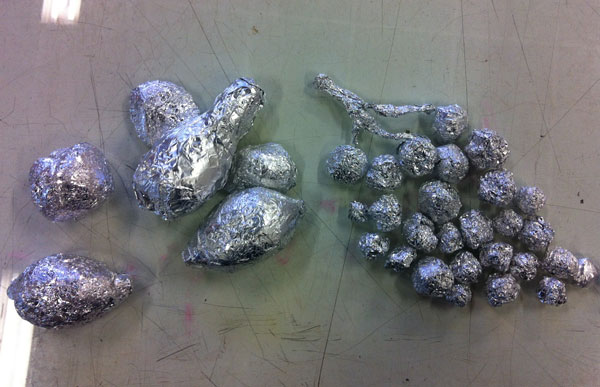 |
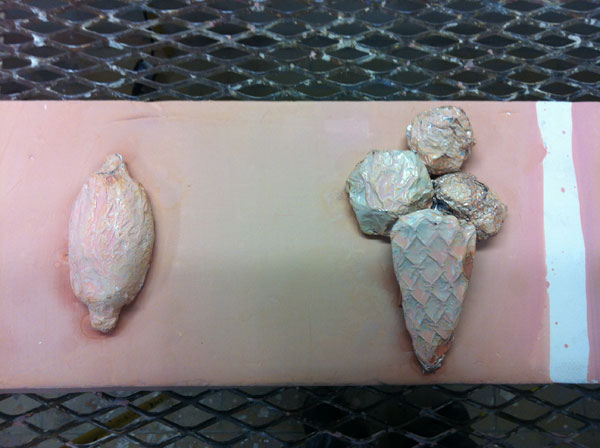 |
| I'm making some still life in aluminum foil for shaping the glass. Basically these experiments are material tests; is it best with flat or do I want a border, with aluminum foil only (how much will it sink, burn and disappear?) contra with an underlying supportive structure. I would prefer if the "only aluminum foil" would work - that would make it possible to work in a much more intuitive and direct way when making shapes. I've also made a landscape, but at this state it looks horrible - which probably means it has potential. [landscapes and still life - is this really me?] Tomorrow I'll go to the pop-up shop in Cissi's and Elisabeth's studio (where you will also find Anna Backlund and Anna Pernilla) on my way home from my glass experiments. |
Labels:
glass,
KKV,
work in progress
Monday, March 12, 2012
further glass tests
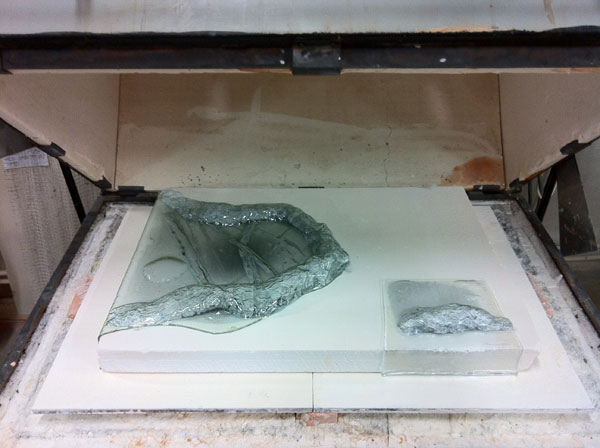 |
photo from November last year, when I made another glass test. I'm spending all this week at KKV (artist run collective workshops) doing some more glass tests for an ambitious project that I'm not ready to share yet. But I'm also working on some small fun experiments I'll definitely show you right away when I'm getting somewhere! I'm happy Tiger likes my Snowwhite screen print. (I still have some left if anyone is interested) |
Sunday, March 11, 2012
Art as Business: book review
Yes - my series Art as Business is back! The content will be a bit different - less about me (already been there), more about others. I will also now and then review books relevant to the subject (If you have any book tips, I'm grateful!) and here comes the first one:
by Jackie Battenfield
I read this book (guide) over Christmas as part of my preparations for my own Art as Business class over at Camp Pikaland and was very pleased with the book. Reading it I was nodding and humming, yes, yes … I agree …that’s something I should do. Hahaha .. just like I always say …
 |
“You have to find a balance between getting yourself out there – networking, meeting and greeting people – and not letting that distract you too much from the work that you re doing. Your job is to be in the studio from at least 9 till 5, if not more. If you don’t want to do that, then you shouldn’t be an artist in the first place. But networking is a big part of it. When you are not in the studio, you’ve got to get out there”
- Christin Tierney, art advisor
(Not saying that I agree with this quote. I don't think Jackie Battenfield does either - it would mean no artist could have a family with children)
I must say this book keeps the promise it makes on the back cover “Finally, a comprehensive guide for visual artists that imparts the practical knowledge you need to build a flourishing life and career” (and I am always a very critical reader especially if something sound even the tiny weeny bit like success literature. This book is not at all that). Some parts though are specific for the United States.
But what does it mean - a guide book? It could have very different content and still be a guidebook. As this is the kind of information I'm always looking for when judging if a book should be something for me, I'm of course getting into that. The artist's Guide is divided into four sections:
Taking charge is divided into two parts: planning/taking action and Tools to support your work. The first shorter part is about how to know what you really want to achieve and how to plan for it. (This is something you will and should find in any serious book about reaching your goals, no matter in what field you work) The second part is about how you should work on assembling tools to support your work (photos, artist statement, CV etc) I very much like that Battenfield initially motivates why you need good photos and text to be able to convince about your art. Jackie Battenfield then goes into how to think when for example documenting an exhibition/performance/installation, how to mark your work samples, describe your work in text and write your artist statement etc. She gives examples from several artists.
Circulating your work starts by acknowledging that there is not one simple way “for making it” and that there are different art worlds. This section describes the different fields you should know about. It goes into peer networking and creating your own opportunities, the professional community of non-profit and commercial venues. It is very good how Battenfield here actually mentions timing; that it is also important to know when you yourself as an artist is in a certain phase when you should wait to show your work (for example when you are changing material or taking any other new direction and need to mature in what you do). This section of the book is also about how to do your homework about where you want to exhibit and what should be in your “artist package”, how to build long-term professional relationships and contains an exhibition checklist.
Supporting your work is about artistic survival: how to secure material, space and time to make the artwork. Battenfield here starts by writing about the importance as an artist to have multiple sources of incomes. Further this section is a bit about pricing, knowing how much you spend and making a budget. When getting into tax reports and credit cards this part of the book - of course - gets very specific for the states. The same goes for the following chapters about fund-raising and legal stuff, but you will find some more general information about how to apply for funds for art projects and making a budget for an art projects, that I think will go for most countries.
Maintaining your practice is about day to day practice; knowing how your spend your time by tracking it (here I smiled in recognition!), organizing and record keeping of art works, getting an assistant (yes, please!) and community building. The last one is a lot about supporting each other as artists emotionally and for sharing information. In this chapter Battenfield also discusses handling rejections and remembering to relax from time to time…
I would like to underline that this book is not just text about what you should know. The artist's guide also contains suggested exercises, for example: how to research your regional non-profit art exhibition opportunities, brainstorm on new ideas to get more exposure for your upcoming exhibition and how to get about to write your artist statement. Every section has also listed resources for further reading
************************
I would first of all recommend this book to fine artists starting out, but this book is also useful for artists at almost any stage of their career feeling a bit lost. You can always learn how to do things better or be reminded of how important some things are. I was myself reminded of the importance of saying “thank-you” and got some tips on record keeping and brain storming for an exhibition. (This book is less suited for an illustrator or someone into arts and crafts)
Tuesday, March 06, 2012
spray paint + screen print
 |
| spray paint |
Monday, March 05, 2012
Friday, March 02, 2012
building a screen printing table
I've for some time been thinking about constructing myself a small screen printing table for the studio. I figured out how to do it myself and it was almost as easy as I had thought!
I wanted the table to be easy to store away so some parts should be removable.
 |
Old vacuum cleaner and the Ikea side table Lack. I chose "lack" because it is hollow - and cheap.
|
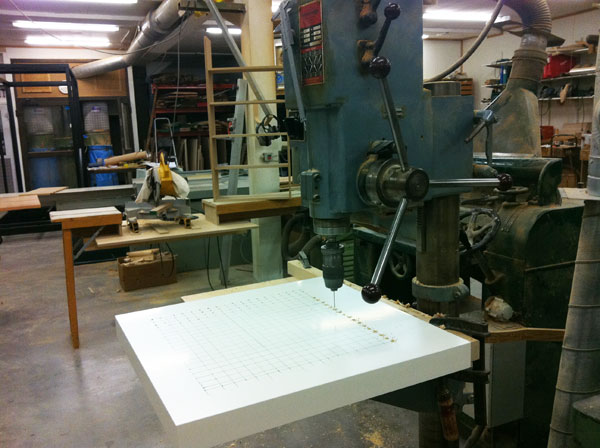 |
I then draw myself a grid and drilled many holes.
|
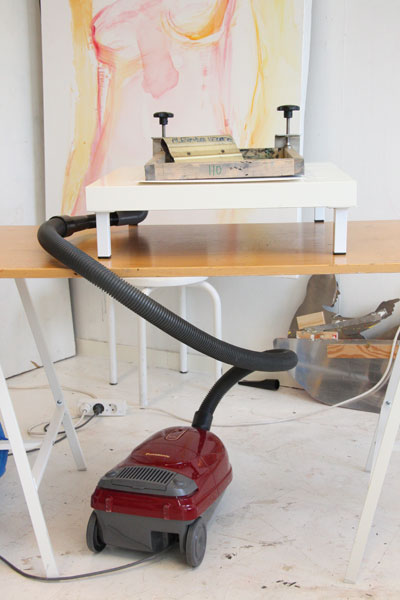 |
Voilà - it is ready!
I've test printed and everything works smoothly.
|
Subscribe to:
Posts (Atom)


